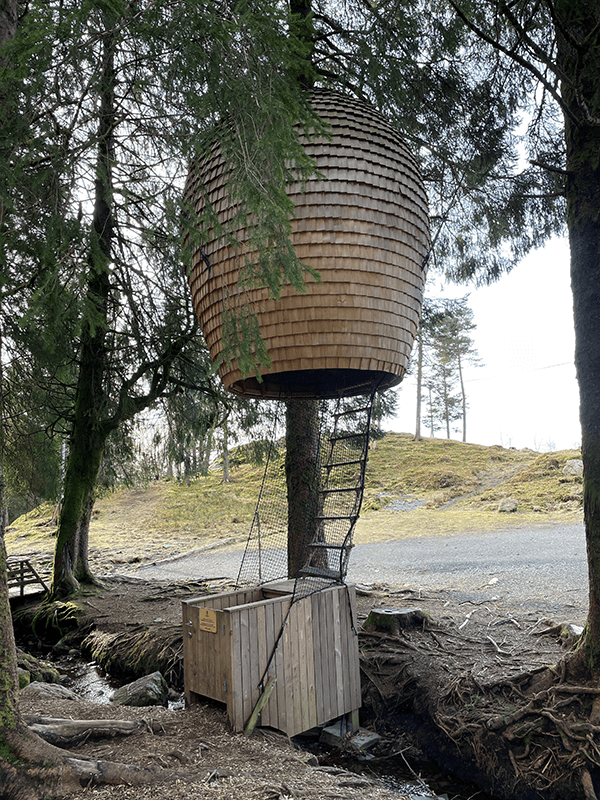I’d been to Oslo before, but when I step foot on a floating sauna in the Oslo fjord, it’s a whole new thing. These pint-sized spas are the latest craze here, and I’m booked in a shared sauna, joining random strangers in a very hot experience. But they’re not strangers for long, as we bond in frenetic dashes, jumping into the frigid 32-degree waters after getting boiling hot. “It’s positive adrenaline,” says fellow sauna-goer Vilija, about the physiology of this process that energizes us. And she knows something about the science of water temps, given that she’s coordinating $29 million in climate change research out of Oslo. Another guest from Wisconsin says, “How often can you sauna and jump into a fjord?” And that begins my discovery of what’s new and cool in Norway’s two leading cities, Oslo and Bergen.
Oslo, Norway’s capital, is a beautiful harborside city situated within an inlet—referred to as the Oslo fjord. The old working waterfront has been redeveloped, and the pretty and popular Akyre Brygge promenade is the result, filled with cafes and shops. This is where the floating saunas can be found, among other locales in Oslo.
Steps from Akyer Brygge is the pearl of the city, the Nobel Peace Center, a humbling place that is always worth a visit for its inspiration to mankind. A gallery of glowing lights, the “Nobel Field,” illuminates Nobel Peace Prize laureates, the latest among them Narges Mohammadi, who crusades against the oppression of women in Iran.
The Scream—New Munch Museum
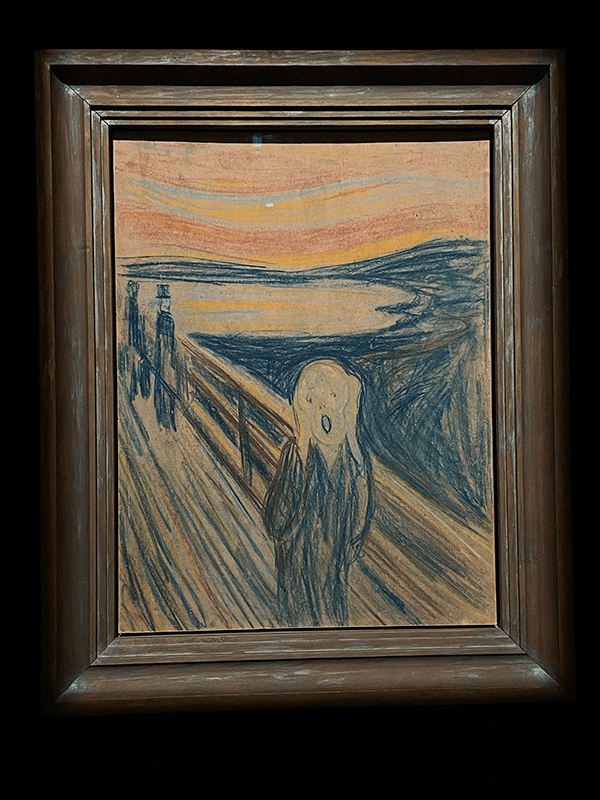
A short walk or tram away is the new Munch Museum, dedicated to the works of Edward Munch (pronounced monk), who in 1893 painted “The Scream,” which some consider to be the Mona Lisa of our times. It was while taking an evening stroll along the Oslo fjord that Munch felt nature scream—and hence was born the inspiration for a masterpiece and its various incarnations. The museum is a beautiful testament to the artist’s wide-ranging work, with galleries soaring across 13 floors.
Hot New Hotel
Also new on Oslo’s horizon is the Sommerro Hotel, which I call temporary home. It was once the city’s largest electrical plant, but an architectural wand transformed it into a stunning art deco hotel. Stop by on a weekend night for the most happening place in the city. Bellows of jazz echo through the brasserie, the musicians set against a backdrop of an enormous fresco depicting Oslo in bygone eras. If jazz and a vibrant bar scene aren’t your thing, consider dining at the hotel’s elegant Plah & Ahan Thai restaurant, which features an 18-course tasting menu (about $210 per person) that can be paired with wines (about $400 total). Or just hit the atrium pool that crowns the Sommerro, with sweeping views of Oslo.
Vilija, who I’d met in the sauna, tells me about more that’s new in Oslo, including the research being done by her and others in Resist Project a five-year, EU-funded initiative supporting the development of 100 new climate-change adaptation solutions. Says Vilija about global climate change, “We assume it has already happened, so we’re researching how to adapt.” Some salmon in Norway, for example, are now swimming further north than usual in search of cooler spawning grounds, while others are confused and swimming south. It’s among the broader issues that Resist Project is tackling including floods, droughts, wildfires, and erosion.
One Oslo landmark that defies any rising seas is the Oslo Opera House—despite its resembling an iceberg sliding into the sea. I partake in the requisite photo op there, followed by a stroll past the Royal Palace (the king was not in residence). Then to balance out new with old, I meander among the medieval grounds of the city’s defensive fortress for a step back in time.
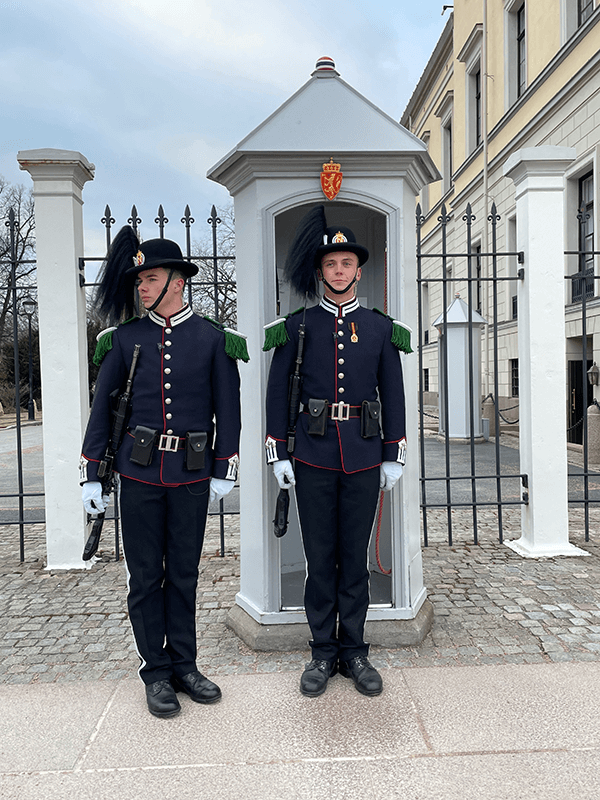
Then it’s on to Bergen.
Bergen, A Fairy tale City
Given the city’s rich medieval heritage, t’s hard at first to imagine anything “new” in Bergen since at every turn, there are reminders of days long gone. Beginning in the 12th century, Bergen became a center for European trading, with the German Hanseatic League (merchant traders) settling in the city and influencing its economy and culture for the next 500 years. Much of the trading was centered around abundant fishing in Norwegian waters, and today Bergen retains that rich maritime history. The waterfront area, a UNESCO World Heritage Site called Bryggen, is dotted with historic wooden buildings so colorful they resemble a box of Crayola crayons. “It’s a fairy tale city,” one local tells me.
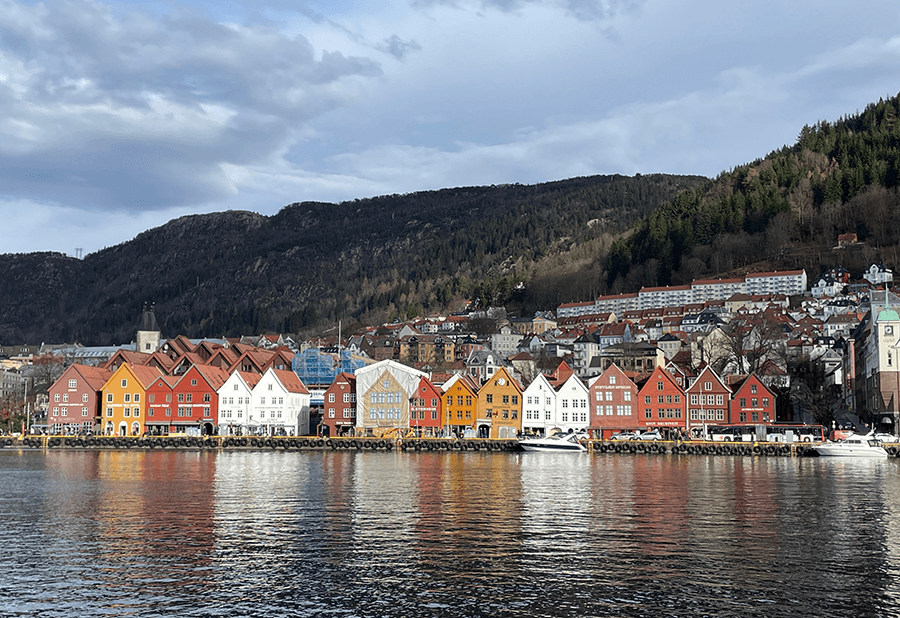
Rock Climbing & Medieval Martial Arts
Yet, despite all that’s old, there’s plenty of new to be found. Like rock climbing. An enthusiast tells me the Bergen area has “world-class rock quality” in the heart of the fjords. There are over 900 climbing routes within an hour of the city, some crags within a 10-minute drive and featuring 10-30 meter single pitches. These attractions are drawing sports climbers from all over, with the local Bergen Klatid Klubb routinely checking the safety and quality of routes, and indoor bouldering in the city, too.
While such endeavors may be too lofty for some, there’s now a weekly Saturday medieval martial arts group that meets on the grounds of Bergen’s fortress complex. I stumble upon this whimsical-looking gathering, the group resembling a bunch of knights from Camelot mixed in with cool motorcycle-types (male and female alike). Some have donned mettle with helmets and shields, while others have long jostling spears. An interesting new type of workout for sure!
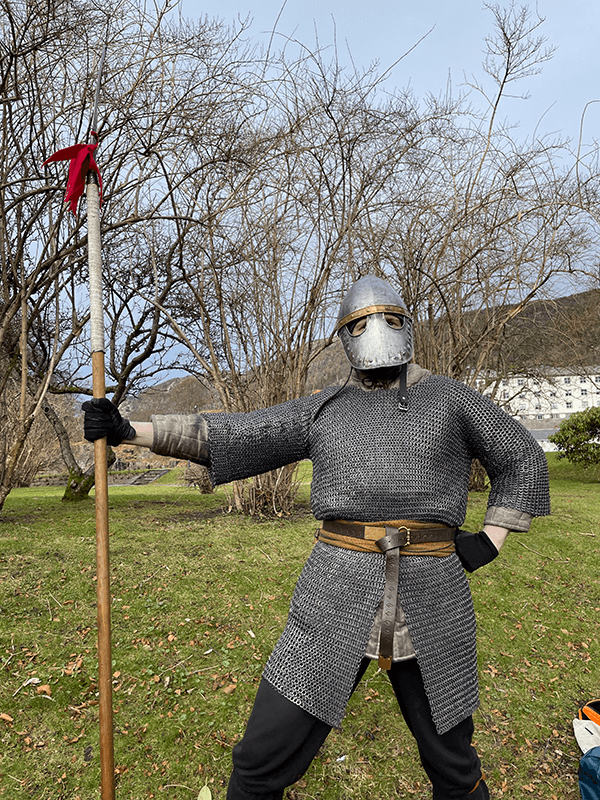
Bergen is Norway’s second-largest city, but it’s quite compact and easy to do a walking tour. In the city center there is a Contemporary Cultural Center, sponsored by the Norwegian Association for Arts and Crafts, and within there are always new curated exhibits on display. When I visit there is a mesmerizing ceramic art exhibit, A Light from Mesopotamia, blending ancient Nordic rock drawings with Kufic writings, an ancient Arabic script.
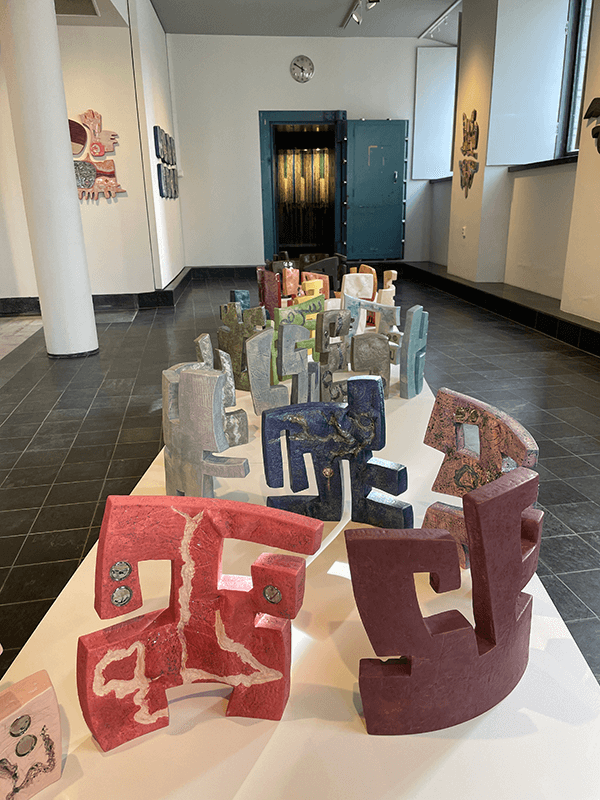
Fjord Mountaintops
Also in the heart of the city is Bergen Harbour Hotel, a super reasonable small hotel with old-world charm. Its location doesn’t get any better, just steps from Bryggen, the city’s famous fish market (a spectacle in itself), and the funicular up to Mount Fløyen. No visit to Bergen is complete without taking the funicular to the stunning mountaintop with views of Bergen. What’s new up top are unique tiny accommodations, including one in the shape of a beehive perched in a tree. Surrounding the area are carved trolls guarding the Nordic forests, which can be hiked from top to bottom. A local tells me that if I’m kind to the forest, the forbidding-looking trolls, in turn, will be kind to me. And with that, I wrap up my fairy tale visit to two remarkable Norwegian cities.
